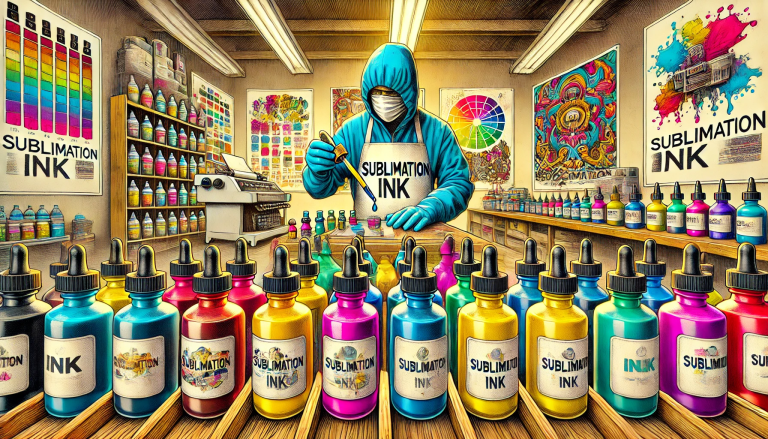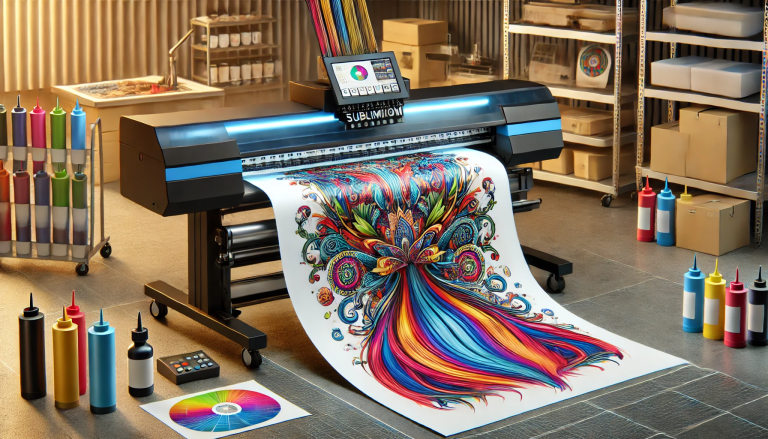“Unlock the Possibilities of Sublimation with Heat Transfer Paper!” – SUBLIMATIONTRANSFERPAPER – A3 Inkjet Sublimation Paper Supplier, A1 Sublimation Heat Paper Supplier, Made in China
Introduction
Sublimation is a popular printing technique used to create vibrant, full-color designs on a variety of materials. It is often used to create custom apparel, mugs, and other items. Heat transfer paper is a great way to transfer designs onto fabric and other materials. It is a cost-effective and easy-to-use method for creating custom designs. In this article, we will discuss whether heat transfer paper can be used for sublimation and the advantages and disadvantages of using it.
Exploring the Different Types of Heat Transfer Paper for Sublimation Printing
Heat transfer paper is an essential component of sublimation printing, a process that uses heat to transfer dye onto a variety of materials. There are several types of heat transfer paper available, each with its own unique characteristics and advantages. Understanding the differences between these papers can help you choose the best option for your project.
The most common type of heat transfer paper is polyester-coated paper. This paper is designed to be used with polyester fabrics, and it is the most economical option. It is also the most versatile, as it can be used with a variety of fabrics, including cotton, polyester, and blends. The downside of this paper is that it is not as durable as other types of heat transfer paper.
Another type of heat transfer paper is vinyl-coated paper. This paper is designed to be used with vinyl fabrics, and it is more durable than polyester-coated paper. It is also more expensive, but it is the best choice for projects that require a high level of durability.
A third type of heat transfer paper is transfer film. This paper is designed to be used with a variety of fabrics, including cotton, polyester, and blends. It is more expensive than polyester-coated paper, but it is also more durable and can be used with a wider range of fabrics.
Finally, there is a sublimation paper. This paper is designed to be used with sublimation inks, and it is the most expensive option. It is also the most durable, and it is the best choice for projects that require a high level of detail and accuracy.
Each type of heat transfer paper has its own advantages and disadvantages, and it is important to consider all of these factors when choosing the best option for your project. Understanding the differences between these papers can help you make an informed decision and ensure that you get the best results.
Troubleshooting Tips for Sublimation Printing with Heat Transfer Paper
Sublimation printing with heat transfer paper is a great way to create vibrant, long-lasting prints on a variety of materials. However, it can be tricky to get the perfect print. Here are some troubleshooting tips to help you get the best results:
- Check the temperature and time settings: Make sure you are using the correct temperature and time settings for the material you are printing on. Different materials require different settings, so be sure to check the manufacturer’s instructions.
- Check the pressure settings: Make sure you are using the correct pressure settings for the material you are printing on. Too much pressure can cause the ink to bleed, while too little pressure can cause the ink to not transfer properly.
- Check the paper: Make sure you are using the correct type of heat transfer paper for the material you are printing on. Different materials require different types of paper, so be sure to check the manufacturer’s instructions.
- Check the ink: Make sure you are using the correct type of ink for the material you are printing on. Different materials require different types of ink, so be sure to check the manufacturer’s instructions.
- Check the printer: Make sure your printer is properly calibrated and functioning correctly. If you are having trouble getting the ink to transfer properly, try cleaning the print head and running a test print.
- Check the substrate: Make sure the substrate you are printing on is clean and free of any debris or contaminants. If the substrate is not clean, the ink may not transfer properly.
- Check the transfer: Make sure the transfer is properly aligned and that all of the edges are sealed. If the transfer is not properly aligned, the ink may not transfer properly.
Following these tips should help you get the best results when printing with heat transfer paper. If you are still having trouble, contact the manufacturer for additional assistance.
The Benefits of Using Heat Transfer Paper for Sublimation Printing
Heat transfer paper for sublimation printing is a great way to create custom designs on a variety of materials. This type of printing is becoming increasingly popular due to its versatility and ease of use. Heat transfer paper for sublimation printing offers a number of benefits that make it an attractive option for many businesses and individuals.
One of the main benefits of using heat transfer paper for sublimation printing is its ability to produce vibrant, high-quality prints. The paper is specially designed to absorb the ink and transfer it to the material, resulting in a vivid, detailed image. This makes it ideal for creating custom designs on a variety of materials, including fabric, metal, and plastic.
Another benefit of using heat transfer paper for sublimation printing is its cost-effectiveness. The paper is relatively inexpensive, making it a great option for businesses and individuals who are looking to save money on their printing needs. Additionally, the paper is easy to use and requires minimal setup, which can help to reduce labor costs.
Heat transfer paper for sublimation printing is also very durable. The paper is designed to withstand high temperatures, making it ideal for use in a variety of environments. This makes it a great choice for businesses that need to produce prints that will last for a long time.
Finally, heat transfer paper for sublimation printing is a great way to create unique designs. The paper can be used to create custom designs on a variety of materials, allowing businesses and individuals to create unique products that stand out from the competition.
Overall, heat transfer paper for sublimation printing is a great option for businesses and individuals who are looking to create custom designs on a variety of materials. The paper is cost-effective, easy to use, and produces vibrant, high-quality prints. Additionally, it is very durable and can be used to create unique designs. For these reasons, heat transfer paper for sublimation printing is an attractive option for many businesses and individuals.
What You Need to Know About Sublimation Printing with Heat Transfer Paper
Sublimation printing with heat transfer paper is a popular method of printing designs onto fabric. It is a great way to create custom apparel, accessories, and other items with vibrant colors and intricate designs. This type of printing is becoming increasingly popular due to its affordability and ease of use.
Sublimation printing involves transferring a design from a special type of heat transfer paper onto a fabric or other material. The paper is printed with a design, then placed onto the fabric. Heat is then applied to the paper, which causes the design to be transferred onto the fabric. This process is often done with a heat press, but can also be done with an iron.
The key to successful sublimation printing is to use the right type of heat transfer paper. There are several different types of paper available, and each type is designed for a specific type of fabric. For example, some papers are designed for use on cotton, while others are designed for use on polyester. It is important to choose the right type of paper for the fabric you are using.
In addition to the type of paper, the temperature and pressure used during the printing process are also important. Too much heat or pressure can cause the design to be distorted or damaged. It is important to follow the instructions provided with the paper to ensure the best results.
Sublimation printing with heat transfer paper is a great way to create custom apparel and other items with vibrant colors and intricate designs. It is important to choose the right type of paper and follow the instructions provided to ensure the best results. With the right supplies and a bit of practice, anyone can create beautiful designs with sublimation printing.
How to Use Heat Transfer Paper for Sublimation: A Step-by-Step Guide
Sublimation is a popular printing technique used to transfer images and designs onto a variety of materials. Heat transfer paper for sublimation is a great way to create custom designs on items such as t-shirts, mugs, and other items. This guide will provide a step-by-step guide on how to use heat transfer paper for sublimation.
Step 1: Prepare the Design
The first step is to prepare the design that you want to transfer onto the item. This can be done using a graphics program such as Adobe Photoshop or Illustrator. Make sure that the design is flipped horizontally before printing.
Step 2: Print the Design
Once the design is ready, print it onto the heat transfer paper. Make sure that the printer settings are set to the highest quality and that the paper is loaded correctly.
Step 3: Cut the Design
Once the design is printed, cut it out using scissors or a craft knife. Make sure that the edges are clean and that the design is cut out accurately.
Step 4: Heat Press the Design
Place the design onto the item that you are transferring it onto. Place a piece of parchment paper over the design and then use a heat press to press the design onto the item. Make sure that the temperature and time settings are correct for the item that you are transferring the design onto.
Step 5: Peel the Transfer Paper
Once the design has been pressed onto the item, carefully peel off the transfer paper. Make sure that the design is firmly adhered to the item before peeling off the paper.
Step 6: Enjoy Your Design
Once the transfer paper has been peeled off, your design is now ready to be enjoyed. You can now wear your custom t-shirt or show off your custom mug with pride.
Using heat transfer paper for sublimation is a great way to create custom designs on items such as t-shirts, mugs, and other items. Following this step-by-step guide will ensure that your design is transferred accurately and that it will last for a long time.
Conclusion
In conclusion, heat transfer paper can be used for sublimation, but it is not the most ideal method. Heat transfer paper is not as durable as other sublimation methods, and the colors may not be as vibrant. It is best to use a dedicated sublimation printer and transfer paper for the best results.




